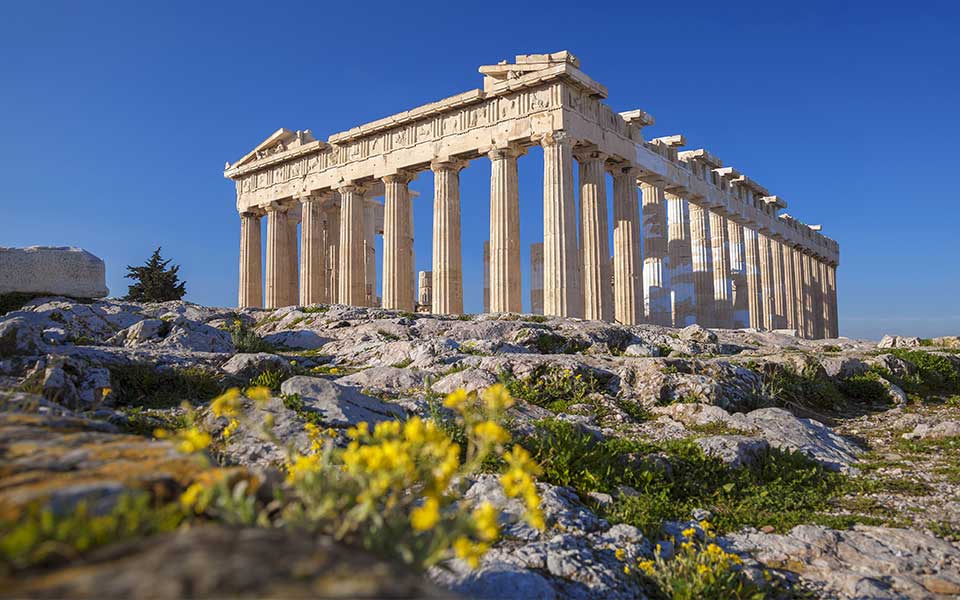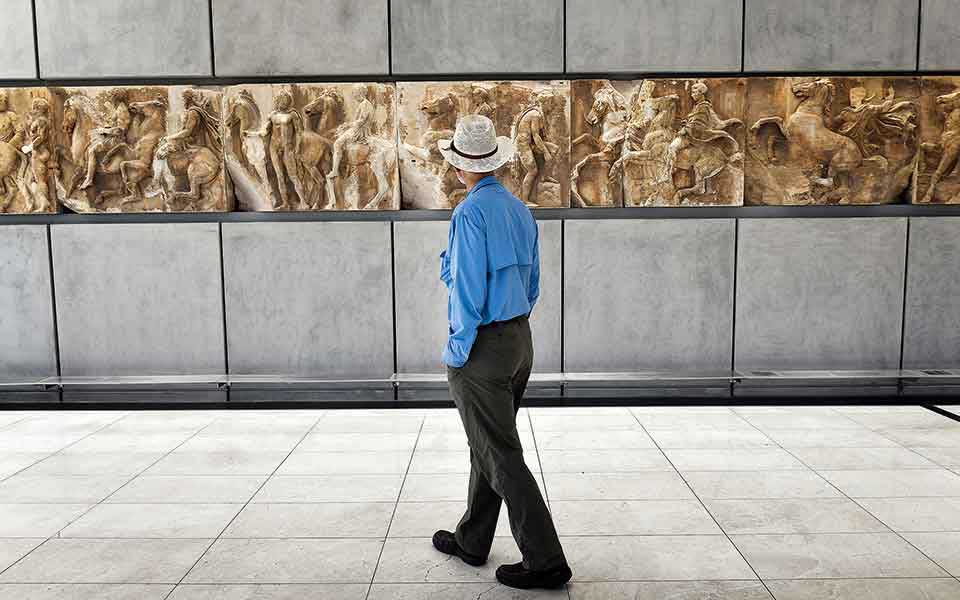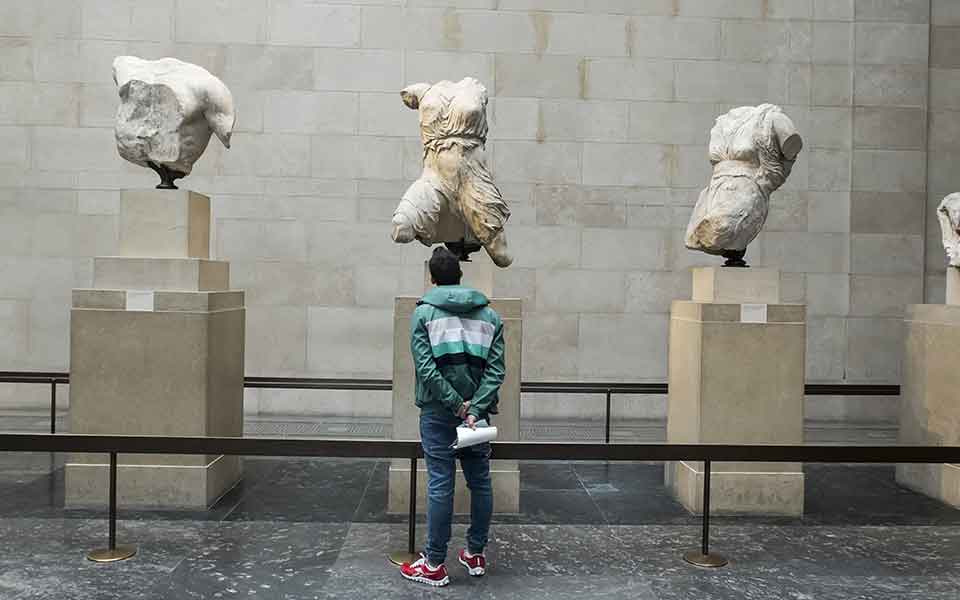If you have ever seen the Parthenon Marbles up close, you’ve probably noticed patches of mottled discoloration in certain sections, most obvious in the crevices and folds of the sculpted figures. At first sight, it’s easy to dismiss these patches as the result of atmospheric pollution, but the “orange-brown crust,” referred to as “Parthenon crusts,” remains a perplexing enigma for conservation scientists. What’s causing them? And will they affect permanent damage if left untreated?
While many of the darker patches on the 2,500-year-old sculptures are certainly the result of rising levels of cardon dioxide in the atmosphere, others are gray or white with diverse origins. Following scientific analysis, some have been found to consist purely of biological elements such as lichens, a fungus-like growth that gradually spreads across the surface of the marble. But the appearance of a conspicuous “orange-brown crust,” first observed in the 19th century, remains a mystery.

© Shutterstock
German scientist Justus von Liebig (1803-1873), one of the principal founders of organic chemistry, studied the Parthenon crusts in 1853, identifying “oxalic” compounds. His study sparked a fierce debate as to whether the crust was anthropogenic, i.e., human made, or natural.
While scientists acknowledge the crust to be calcium oxalate, a calcium salt of oxalic acid, Greek scientist Eleni Angelakopoulou, a chemical expert at the Acropolis Monuments Conservation Service, notes that there is still no consensus as to its cause: “discussions have been ongoing since the 1970s, and we organized a conference in the 1990s, but the scientific community has not come to any conclusions. We know it’s calcium oxalate, but its origin remains a big debate.”
Dr. Angelakopoulou’s comments came during a discussion about a recent study of a “brown stain” on a fragment of the Parthenon Marbles, in the collection of the National Museum of Denmark in Copenhagen. Analysis was carried out on the fragment, the head of a Centaur from the south metopes, by a collaborative team of researchers from the Museum, the University of Southern Denmark, the University of Cranfield in the UK, and the University of Pisa in Italy.
Publishing their findings in the peer-reviewed Journal of Heritage Science last week, the team used optical microscopy on five samples from the fragment, but failed to confidently categorize the stain as biological, anthropogenic, air-reactive, or originating from iron particles within the marble. While the study hasn’t conclusively solved the mystery, the research has provided crucial details on the chemical composition of the brown stain.

© Shutterstock
Eleni Angelakopoulou notes that the same discoloration has been found on marble monuments in Italy. In Greece, since the 1990s, the debate continues between those advocating for a biological origin, citing its presence on fractured surfaces where ancient paint couldn’t reach, and those arguing for an anthropogenic one due to the crust’s uniformity, uncommon in nature. Angelakopoulou emphasizes that the latest research hasn’t yielded a conclusion, leaving the field open for further exploration.
For his part, Manolis Korres, president of the Acropolis Monuments Conservation Committee, adds another layer of complexity to the debate. Describing the crust as “orange-red” in color, the veteran architectural historian underscores its prevalence in Pentelic marble monuments. He explains the “reddening” of marbles in ancient quarries due to nearby argillaceous (clayey) sediments, and mentions the “orange-red” shade in age-old lime plaster on Cycladic mansions.
Regarding the Parthenon, he notes Ottoman whitewashing before conversion into a mosque in the 15th century. The “orange-red” puzzle intensifies when considering other monuments on the Acropolis. Observing the shade on the external surface of the Pinakotheke, the left wing of the Propylaea, but absent in its central building, Korres suggests human intervention. Some of the columns of the Parthenon exhibit the crust above a certain height, possibly influenced by the demolition of nearby houses in 1840.
In conclusion, Korres suggests the lack of a determined origin is due to fragmented approaches, favoring observations over microscopic analyses.
With information in Greek from kathimerini.gr.












